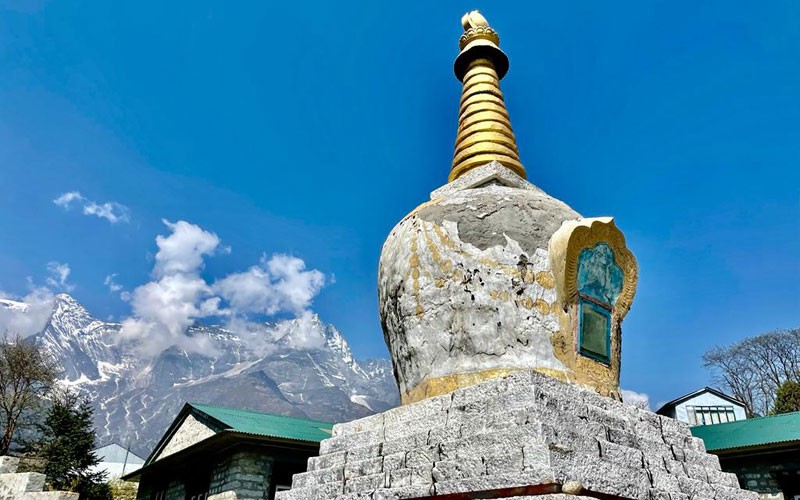
Annapurna trekking
By Alpine

The Mani Rimdu festival is one of the sacred festivals of Nepal. It is one of the oldest festivals celebrated by the Sherpas. Every year, a number of Tibetan Buddhist monasteries in northeastern Nepal celebrate Mani Rimdu. It is a three-week-long, intricate ceremony performed by Tibetan monks and lamas and the Sherpa.
The entire ceremony is 19 days long. There are nearly two weeks of preliminary work, which include deity yoga and offerings to protector deities; three days of public ceremonies, which include masked dances and a mass empowerment attended by lay villagers and foreign visitors; and two days of closing rites.
The Mani Rimdu festival is celebrated according to the Tibetan lunar calendar. The festival is celebrated in the ninth month, which coincides with the full moon, which falls in between the months of October and November.
The Mani Rimdu festival is celebrated in the northeastern region of Nepal, specifically the Khumbu region. It is celebrated in monasteries across the region, but mainly in the monasteries of Tengboche, Thame, and Chiwong.
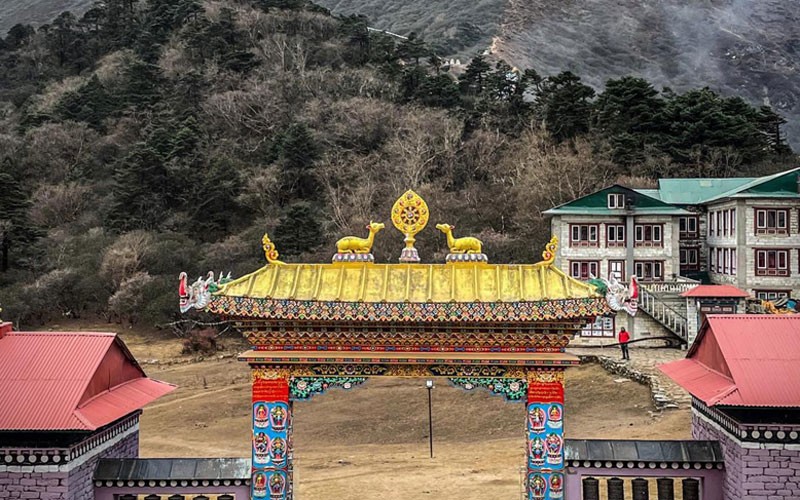
In 2024, the Manu Rimdu festival falls on the 15th, 16th, and 17th of November. If you are planning to attend the festival, this year is the perfect chance. It will be the celebration of the year, and you will get to witness some of the most sacred ceremonies of Tibetan Buddhism.
There is a deep-rooted history in the festival of Mani Rimdu. It not only is a significant part of Nepal but also holds equal importance in Tibet. The name Mani Rimdu is the Sherpa pronunciation of the Tibetan term Mani Ril Sgrbu. Despite the Mani Rimdu festival being known to be the “Sherpa festival,” it originally began at Rongphu Monastery in Tibet. The history of this festival dates back to the early 1900s.
Mani Rimdu's rituals are a part of the Anuttarayoga class of tantra, which is the most profound system of Tibetan Buddhism. It is believed that the Mani Rimdu is celebrated on the occasion of the religion of Buddhism being introduced by Guru Rinpoche. It is a festival of honor and faith towards the teacher of Tibetan Buddhism.
The festival is said to be one of the, if not the biggest, celebrations among the followers of the Tibetan Buddhism of the Khumbu region and Tibet. It is deeply rooted in their culture and history and is a part of their identity. The festival marks the beginning of Tibetan Buddhism brought forward and flourished by Padmasambhava ("Born from a Lotus"), also known as Guru Rinpoche. It is a celebration of the victory of Buddhism over the Bon religion and the conversion of the Sherpas to Buddhism.
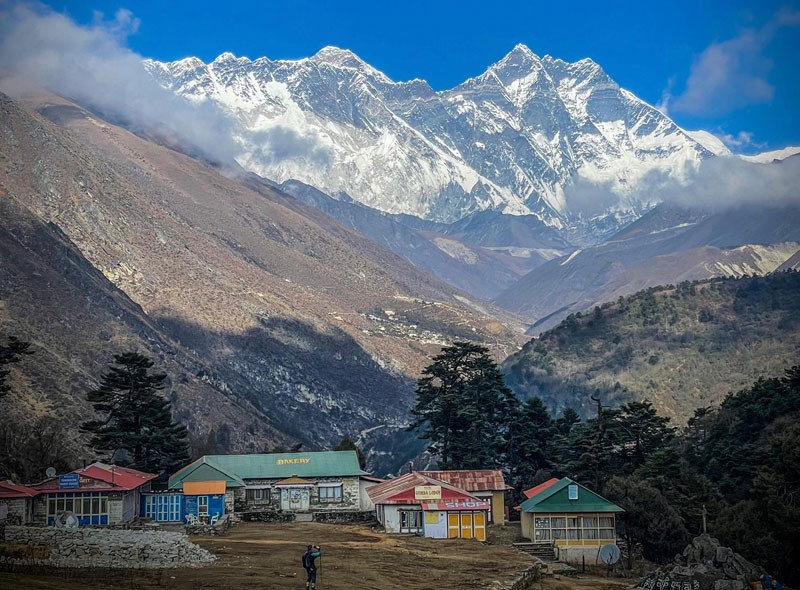
The festival has a series of rituals for different days where the Lamas do puja and ask blessings for the prosperity, peace, and happiness of the communities and the world. The days include dance performances and intense prayer and meditation hours honoring their faith towards Guru Rinpoche. The festival also plays a significant role in preserving the Sherpa culture and engaging the tourists who are trekking through the trails.
The Mani Rimdu is a combination of 19 days of different rituals and celebrations. Out of the 18 days, the three days are the most significant ones. And in the span of those three days, the following ceremonies and rituals take place:
The sand mandala is about creating an intricate art of different colored sand used to make complex designs. The idol of Mani Rimdu, also referred to as the Buddha of Kindness, is the focal point of this elaborate ritual, which takes days to create. Around the Mandala are placed defensive blades, which represent the gods. Over the center sits the bowl of Mani Rilwu pills, or spiritual medicine. The ritual is completed with the chanting of the powerful prayer of “Ohm Mani Padme Humg." The Lamas pray for the peace and kindness being blessed towards the attendees of the ceremony in the monastery.
The ritual of the Wong, celebrated on the first day, also known as the empowerment, is a public ceremony. This day includes a prayer performed by the head Lama, who bestows blessings on the people who attend the ceremony.
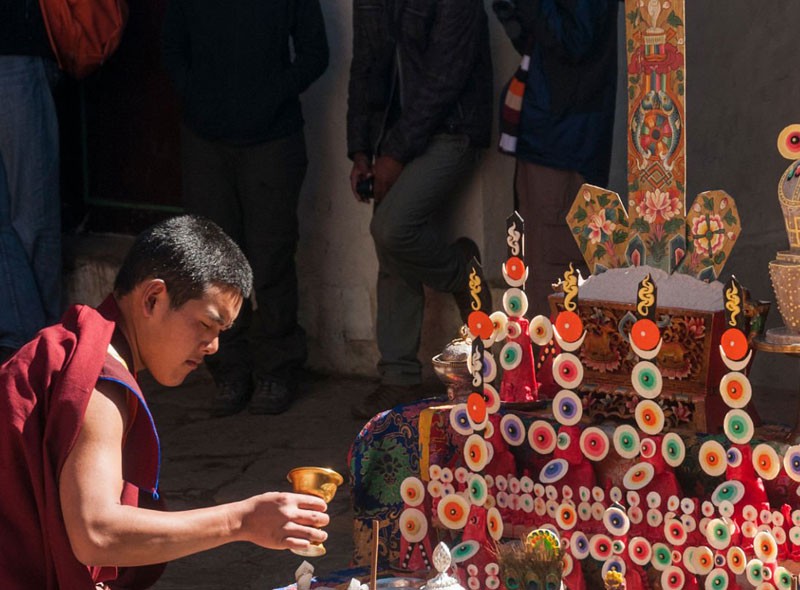
A special invitation is sent out for the people attending the ceremony and the rituals performed are sacred; that includes a ritual of purification and threads of sacredness. In the tenth month of the Lunar Calendar, on a full moon day, Rilwu (holy or blessed pills) and Tshereel (pills with blessings for a long life) are given to the guests.
The second day of the festival and the focus of the ceremony deviate towards performing masked dances by the monks. The Chham dance performed represents the symbolism of the victory of good over evil, where demons are chased away or converted into protectors. It is one of the wells throughout performances that keep the spectators on their toes as every move of the monks enchants them.
Ser-Kyem is a ceremony where an offering of tea is made to the protectors of "Dharma,” also known as the “Dharma Guru.” The destiny dish, resembling a giant disk, is used to make the offering. The small glass is placed on top of the large bowl, which is a traditional dish. The drink spills onto the bowl as the Ser-Key is being poured into the upper glass. In Tibetan, Ser means "golden," and Kyem means "beverage."
Additionally, alcohol is offered on a special vessel of their choosing, primarily silver, to the Earth deities Shi-Dak, Khandro, Yidam, the worker of the monastery and a personal deity, and the Lama. Stronger brotherhood ties amongst them are said to result from it.
On the third day of the festival, known as Jinsak or the Fire Puja, monks perform rituals in which they worship the gods of the mandala and Agni, the god of fire, in an effort to alleviate all forms of suffering in the world. The grain and butter are burned as a symbolic ritual of burning away the harm and suffering of the world. Then the sand mandala made days ago is destroyed as a symbol of evanescence and acceptance of life without any attachments.
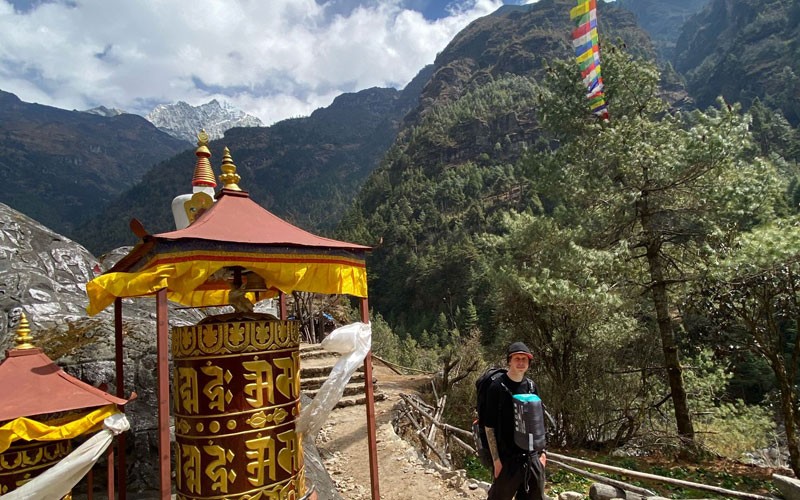
Chhingpa is an elaborate dance performance that symbolizes four Ghings, fortifying Buddhism and the Buddhist faith from the demonic attacks. The dancers are adorned with shining and colorful marks and often charge at the crowds to evoke emotions out of them.
The slow motion dance, popularly referred to as the Dakini dance, adds intrigue to the performance. The five dancers, representing the male and female portions, with the males donning masks and the females not. The males stand for cunning tactics, and the females for knowledge; these are the two facets of the path. Barley flour is used to make the tormas, which are then adorned with colored butter. At the beginning of the ceremony, it represents the deity's body; by the end, it represents enlightenment. The temple's center is where it stands, facing the mandala on a separate shrine.
As mentioned above, the festival of Mani Rimdu takes place in the ninth month of the lunar calendar, which usually falls during October-November. So, if you are interested in taking part in or witnessing the festival, you need to plan early and accordingly. In fact, you can plan your trek to the Everest Base Camp right around this time and get the best of both worlds. And not only that, you can even combine the Gokyo Lakes Trek and the Three Passes Trek while also experiencing the Mani Rimdu Festival.
However, you need to be mindful while attending the festival, as it is a holy site and any outside interference will be deemed disrespectful. Maintaining silence, respect, dressing modestly, keeping distance, and following the rules of boundaries should be practiced. We can view the practice of the Sherpa and Buddhist culture while keeping a safe distance. Always make sure you do not wander around, as there are many restricted areas and always seek permission before entering any space.
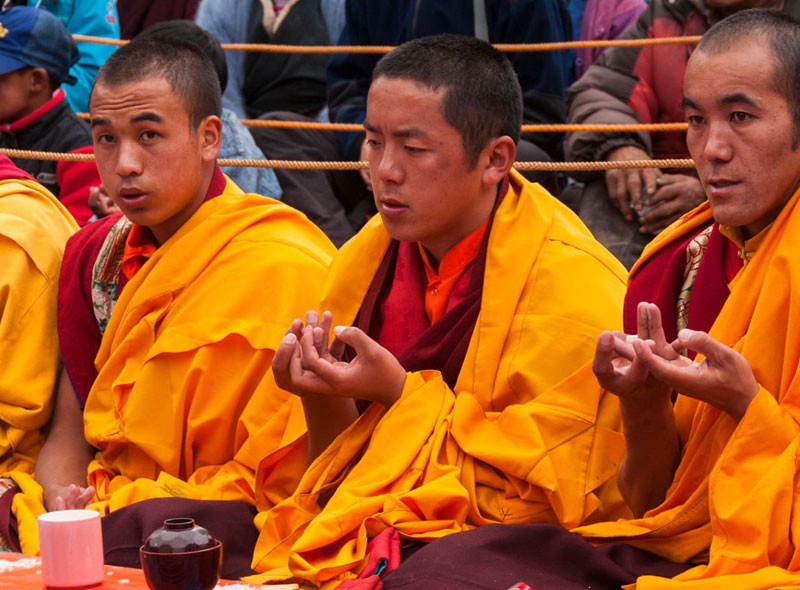
And last but not least, if you are planning to experience the Mani Rimdu festival in 2024/2025, then we can be of your service. Our itinerary for Everest Base Camp Trek with Mani Rimdu Festival is presented below:
Day 1: Arrive in Kathmandu and transfer to the hotel.
Day 2: Fly from Kathmandu to Lukla (30 minutes) and trek to Phakding (3 hours).
Day 3: Trek from Phakding to Namche Bazaar (6 hours)
Day 4: Acclimatization in Namche Bazar
Day 5: Trek from Namche Bazaar to Tengboche (4 hours) and enjoy the Mani Rimdu festival
Day 6: Full day in Tengboche to enjoy the Mani Rimdu festival with the locals
Day 7: Trek from Tengboche to Dingboche (4 hours)
Day 8: Acclimatization in Dingboche
Day 9: Trek from Dingboche to Lobuche (4-5 hours)
Day 10: Trek to Everest Base Camp (5 hours) and return to Gorak Shep (3 hours).
Day 11: Trek to Kala Patthar (2 hours) and trek from Gorak Shep to Pheriche (5 hours)
Day 12: Trek from Pheriche to Namche Bazaar (6 hours)
Day 13: Trek from Namche Bazaar to Lukla (6 hours)
Day 14: Fly from Lukla to Kathmandu (30 minutes) and departure
The itinerary is flexible and can be constructed as per your requirements. If you only wish to trek to Tengboche Monastery and experience the Mani Rimdu festival, that can also be arranged. Our experienced guides will be there every step of the way, providing you with all the information you are curious about during the trek. We would love to be at your service. For more details, please contact us and let us be at your service.